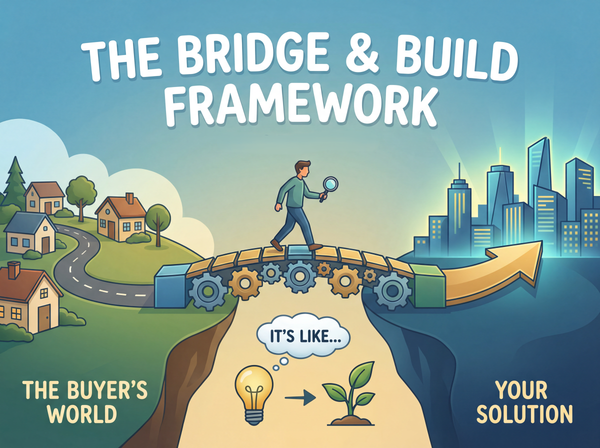How to Create an Effective Ideal Customer Profile: The 5 Key Characteristics
Creating an Ideal Customer Profile (ICP) allows you to focus your marketing efforts, refine your product development, and ultimately increase your conversion rates by targeting the people most likely to benefit from what you offer.
Why You Need an Ideal Customer Profile
Before diving into the characteristics that make up an effective ICP, let's understand why it matters:
- Focused marketing efforts: When you know who you're talking to, your messaging becomes more relevant and compelling.
- Better product development: Understanding customer pain points helps you create solutions they actually need.
- Higher conversion rates: Targeting the right audience means less wasted resources and better ROI.
- Improved customer retention: When you attract customers who are a perfect fit, they tend to stick around longer.
The 5 Key Characteristics of an Effective Ideal Customer Profile
While you need a minimum of three characteristics for an effective customer profile, including all five of these will give you the most comprehensive understanding of your ideal customer.
1. Age
Age is a window into your customer's life stage, priorities, and decision-making processes.
How to define it effectively:
- Use age ranges rather than specific ages (e.g., 25-34 rather than 27)
- Consider generational characteristics (Millennials, Gen Z, Baby Boomers)
- Think about how age impacts your customer's relationship with your product or service
Example: If you're selling retirement planning services, your ideal customer might be in the 45-60 age range - people who are established in their careers but still have time to make meaningful changes to their retirement strategy.
2. Gender
While not all products and services are gender-specific, understanding gender demographics can help refine your messaging and product development.
How to define it effectively:
- Consider if your product naturally appeals more to a particular gender
- Be inclusive in your thinking, avoid outdated stereotypes
- Remember that some products are gender-neutral, and that's perfectly fine
Example: A skincare brand might have different ICPs for different product lines—one targeting women with specific hormonal skin concerns and another focusing on men's shaving-related skin issues.
3. Profession
Understanding what your ideal customer does for a living reveals their income level, pain points, professional network, and daily challenges.
How to define it effectively:
- Consider industry, role, and seniority level
- Think about decision-making authority in B2B contexts
- Analyze how their professional life creates the need for your solution
Example: A project management software company might target mid-level managers in technology companies who struggle with coordinating remote teams and need better collaboration tools.
4. Problem
Perhaps the most crucial element of your ICP is understanding the specific problem your ideal customer is trying to solve.
How to define it effectively:
- Be specific about their pain points
- Consider the emotional and practical impact of the problem
- Identify what solutions they've tried before (and why those solutions failed)
Example: A meal kit delivery service might target busy parents who face the problem of wanting to provide healthy, home-cooked meals but lack the time for grocery shopping and meal planning.
5. Interests
Understanding what your ideal customer cares about outside of their immediate problem helps you connect with them on a deeper level.
How to define it effectively:
- Consider both professional and personal interests
- Look for patterns in the media they consume
- Identify communities they belong to
Creating Your Minimum Viable ICP
Remember, while all five characteristics create a comprehensive profile, you need at least three for an effective ICP. If you're just getting started, focus on:
- Problem: Understanding the specific challenge your customer faces
- Age: Knowing their life stage and generational context
- Profession: Understanding their work life and how it relates to their needs
These three characteristics give you enough information to create targeted marketing messages and develop products that solve real problems.
Putting Your ICP into Action
Once you've developed your ideal customer profile, here's how to put it to work:
- Revisit your marketing messaging: Does it speak directly to your ICP's problems and interests?
- Evaluate your product features: Do they effectively solve your ICP's core problems?
- Audit your distribution channels: Are you present where your ICP spends their time?
- Train your sales team: Can they speak knowledgeably about your ICP's industry and challenges?
Conclusion
An effective ideal customer profile goes beyond basic demographics to create a holistic picture of the person most likely to benefit from your product or service.
Remember that your ICP isn't set in stone. As your business evolves and markets change, revisit and refine your ideal customer profile to ensure it continues to guide your business decisions effectively.
Keep Crushing!
- Sales Guy


